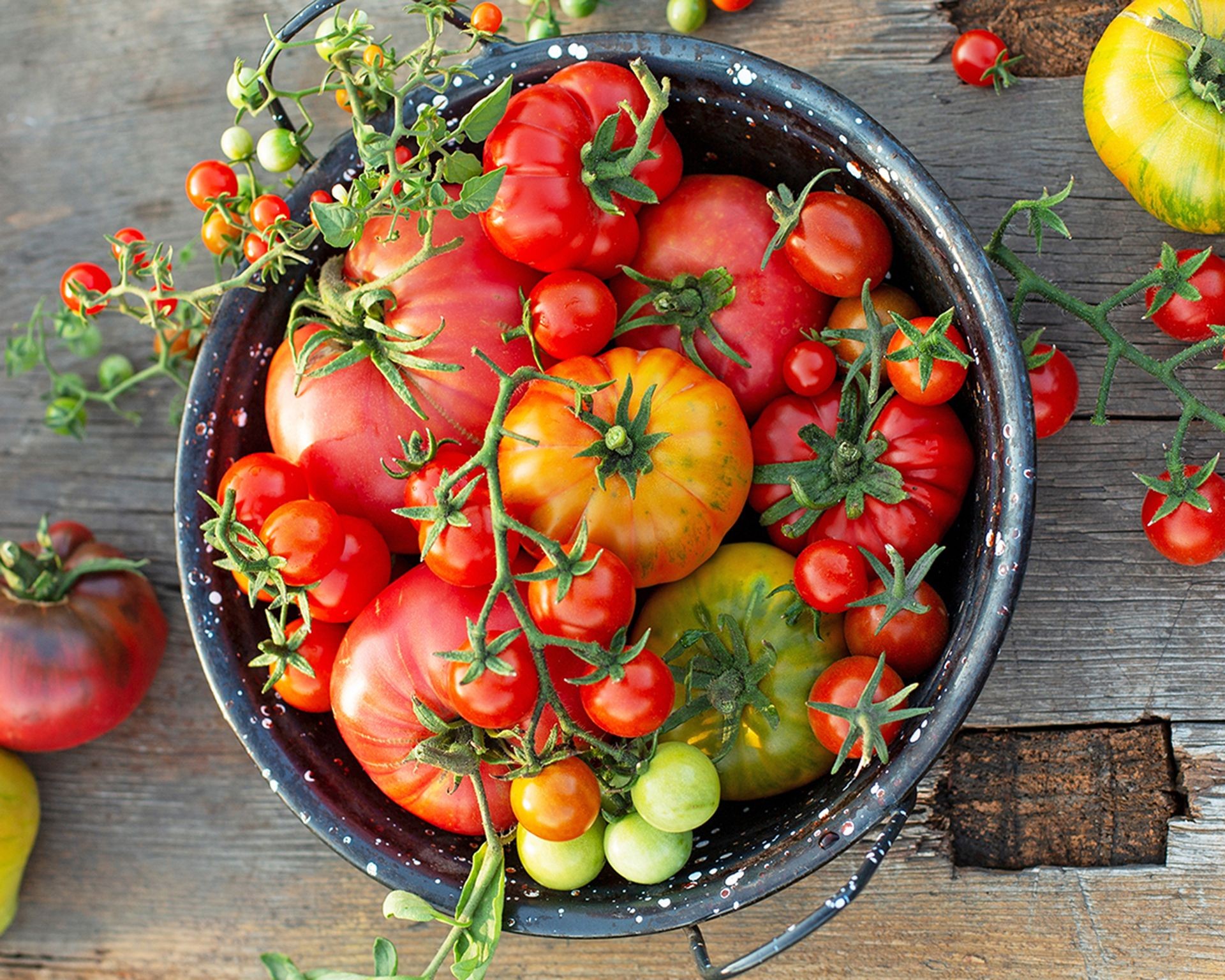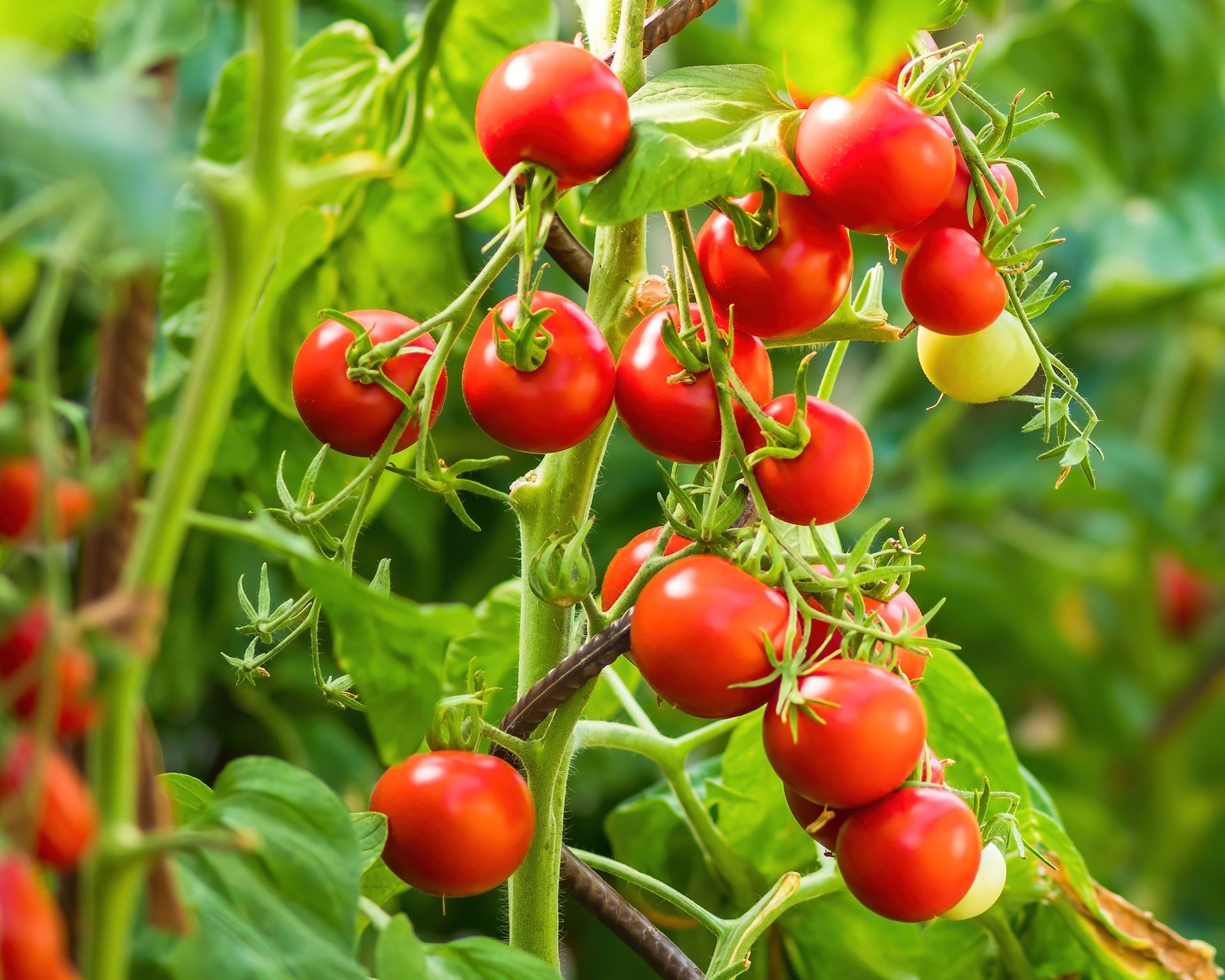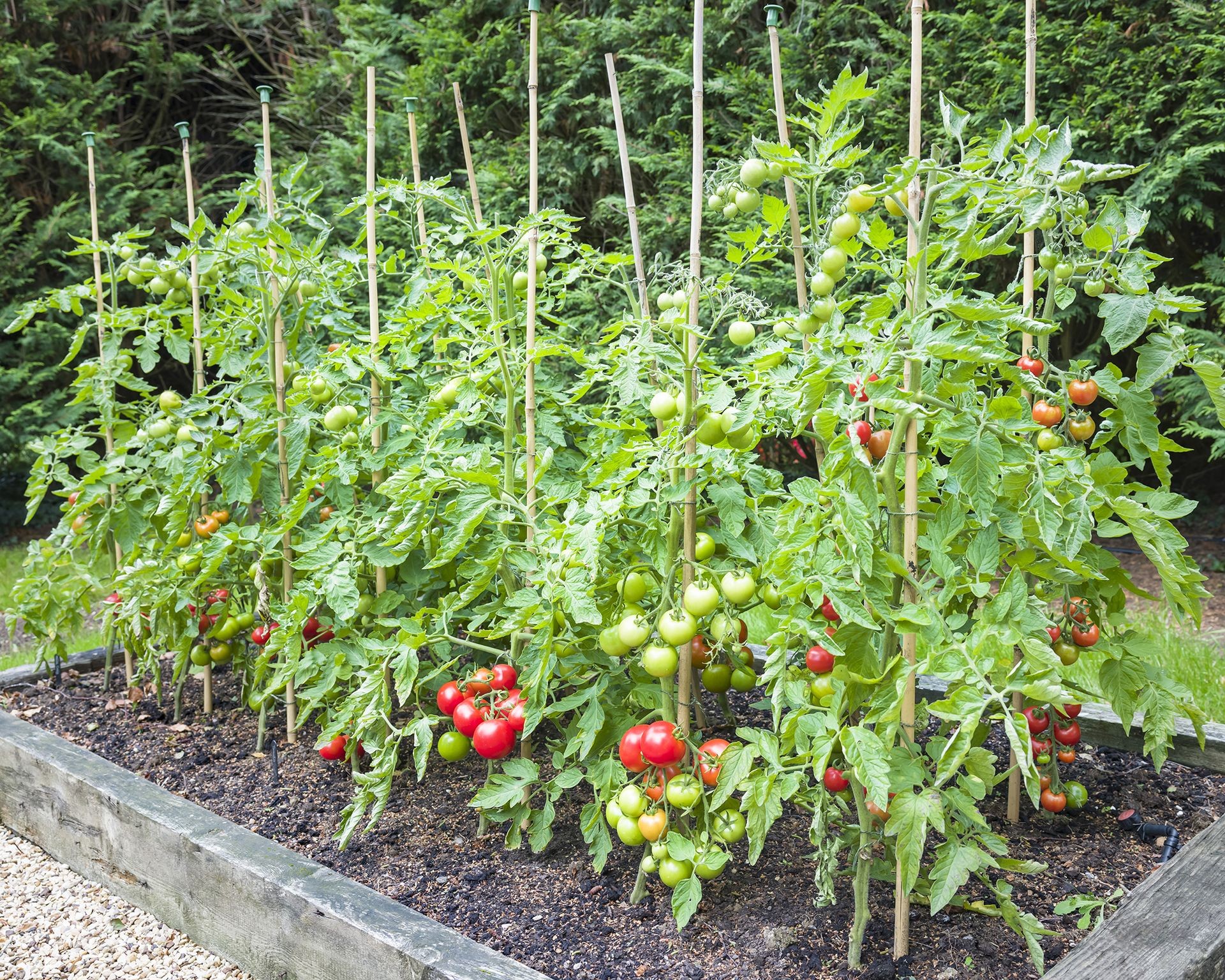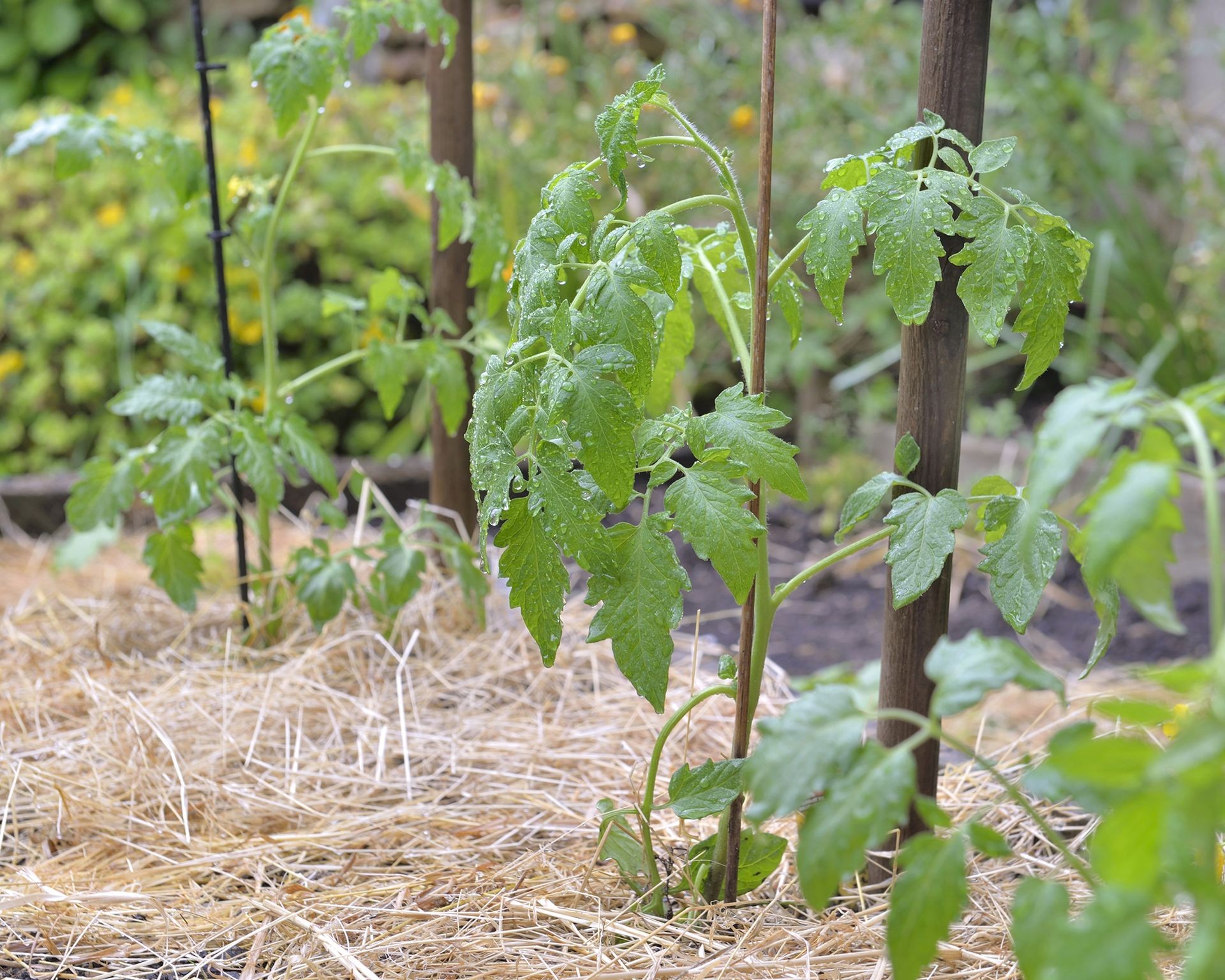No products in the cart.
NEWS
Growing Giant Tomatoes: Tips to Speed Up Your Harvest
There’s nothing quite like the taste of a sun-ripened tomato picked straight from your own garden. That sweet, juicy burst of flavor is a true highlight of the summer season. However, the journey from a tiny seed to bountiful fruit can take up to 90 days or even longer, leaving many gardeners eager to accelerate the process and enjoy their harvest sooner. Whether you’re battling a short growing season in cooler climates or simply impatient for those first juicy fruits, knowing how to encourage faster tomato growth is a valuable skill for any home gardener.
The challenge is particularly acute in regions with brief summers. While southern gardeners often benefit from extended warmth, those in northern areas face a race against the calendar, needing their warm-season tomato plants to mature and produce before the inevitable arrival of the first frost. This often necessitates starting plants indoors or purchasing larger starts. Speeding up growth offers a clear advantage in these scenarios, but it’s a technique that requires care, as pushing plants too hard can sometimes have unintended drawbacks.
The Rewards of Encouraging Faster Tomato Growth
For gardeners in cooler northern climates, the primary motivation for speeding up tomato growth is quite simple: ensuring a harvest before the season ends. With outdoor planting typically delayed until well into spring due to the risk of frost, the natural maturation time of tomato plants can mean the difference between a handful of late fruits and a generous summer bounty. Encouraging robust, early growth helps guarantee that plants reach their full fruiting potential even if a killing frost arrives in early autumn.
Beyond cooler regions, even gardeners in warmer areas who might have gotten a late start on their planting can benefit from techniques that promote quicker development, allowing them to still enjoy a respectable harvest despite the delay. It’s about maximizing the plant’s potential within the available growing window, no matter its duration.
 Freshly picked tomatoes of different varieties in bowl
Freshly picked tomatoes of different varieties in bowl
Understanding the Potential Pitfalls
While the desire for faster growth is understandable, it’s crucial to approach it with caution. Just like pushing growth too quickly in any living organism, forcing a tomato plant can lead to negative consequences. Overly rapid vegetative growth, particularly in young seedlings, can result in “leggy” plants – tall, spindly, and weak stems that lack the sturdy structure needed to support developing fruit. These lanky plants produce fewer side shoots, which translates directly to fewer places for flowers and, subsequently, fewer fruits.
The temptation to over-fertilize seedlings to spur growth is a common mistake. Too much energy directed towards vegetative growth before the plant is mature enough to bud leads to that weak, elongated structure. Even more established plants, if forced to fruit too early or without adequate stem strength, can suffer stem breakage under the weight of water-filled tomatoes. The goal is balanced, healthy, and timely growth, not just fast growth at the expense of plant health and fruit quality.
Practical Steps to Encourage Speedy Tomato Growth
Accelerating tomato growth is best done thoughtfully and gradually. Pushing too hard too fast can negate the very benefits you’re trying to achieve. Before implementing specific techniques, remember that fundamental gardening principles are paramount. Ensuring your tomato plants receive ample sunlight – ideally eight hours or more per day in a sunny location – is a non-negotiable foundation for vigorous growth.
 Cherry tomatoes on vine
Cherry tomatoes on vine
Choose Early-Maturing Varieties
One of the simplest ways to ensure an earlier harvest is to select tomato varieties specifically bred to produce fruit quickly. While the classic large slicing tomatoes often take longer, many smaller varieties, especially cherry tomatoes, can yield ripe fruit in as little as two months from transplanting. Look for cultivar names that include terms like “Early,” “Quick,” or indicate a shorter days-to-maturity on the seed packet or plant tag. Some examples known for earlier production include Early Cascade, Kootenai, Gold Nugget, and Fantastic Hybrid, among others. Research varieties suited for your specific climate and desired fruit type that offer a faster turnaround.
Start Seeds Indoors Ahead of the Season
Giving your tomato plants a head start indoors is almost essential in cooler climates or for obtaining an early harvest anywhere. Aim to start tomato seeds indoors approximately six to eight weeks before your region’s average last frost date. This allows seedlings to grow into robust, young plants with a developed root system before they face the challenges of the outdoor environment.
Remember the critical step of hardening off seedlings. This gradual process exposes indoor-grown plants to outdoor conditions like sun, wind, and cooler temperatures over a week or two, preventing shock when they are finally transplanted into the garden. Starting indoors and carefully hardening off provides a significant advantage in getting plants off to a quick and healthy start once they are in their final growing location.
Utilize the Benefits of Raised Beds
Planting tomatoes in a raised garden bed can offer several advantages for encouraging faster growth. Raised beds typically warm up earlier in the spring than ground-level garden soil, providing a more favorable temperature for the heat-loving tomato roots. Furthermore, raised beds give you greater control over the soil composition. A well-draining, nutrient-rich soil mix is crucial for vigorous tomato growth.
Creating an optimal mix often involves incorporating plenty of organic matter like compost and aged manure. Adding amendments such as soft rock phosphate, alfalfa meal, and worm castings can further enhance soil fertility and structure, creating a “super soil” environment that promotes rapid, healthy plant development. Many commercially available bagged soil mixes are also formulated specifically for tomatoes and can provide an excellent starting point.
 Tomato plants growing in raised bed
Tomato plants growing in raised bed
Protect Young Plants with Water Walls
For early season planting, especially in areas prone to cool nights or unexpected temperature dips, using plant protectors like water walls can be highly effective. These inexpensive, reusable structures are placed around young tomato transplants. Their individual cells are filled with water, which absorbs heat during the day and slowly releases it throughout the night, creating a warmer microclimate around the plant. This protection shields seedlings from wind and cold temperatures, allowing them to establish and grow more quickly during the early stages. Once ambient temperatures are consistently warm and the plant has grown sufficiently, the water walls can be removed.
Apply Mulch to Retain Warmth and Moisture
Once your tomato plants are established outdoors, applying a layer of mulch around the base of the plants is beneficial for several reasons, including encouraging faster growth. Mulch helps to warm the soil, especially important in cooler spring conditions. It also helps retain soil moisture, reducing the stress on plants from fluctuating water levels. Various materials can be used, including plastic sheeting, straw, shredded bark, or compost.
Some gardeners advocate for red plastic mulch, claiming it increases yields, though personal experience can vary on its effectiveness compared to other materials. Organic mulches like straw or cedar shavings also break down over time, adding nutrients to the soil. Cedar shavings offer the added benefit of potentially deterring certain pests. If using straw, ensure it is seed-free to avoid introducing weeds. Avoid using hay, which often contains weed seeds.
 Mulching tomato plants with straw
Mulching tomato plants with straw
Prune for Productivity
Strategic pruning is a technique primarily for indeterminate tomato varieties (those that continue to grow and produce fruit until frost) that helps channel the plant’s energy into fruit production rather than excessive leafy growth. By removing strictly vegetative growth, you encourage the plant to focus on developing flowers and fruits. Pruning also improves air circulation within the plant’s canopy, which can help reduce the risk of fungal diseases.
The main targets for pruning are “suckers” – small shoots that emerge from the leaf axils (the point where a leaf branch meets the main stem). These suckers will develop into full branches if left unchecked. Starting by early summer, regularly pinch off these suckers by hand while they are still small and easy to remove. A common practice is to remove all suckers except for the one immediately below the lowest flower cluster; this sucker can be allowed to grow on and produce fruit.
Fertilize Judiciously and Appropriately
Fertilization is key to fueling growth, but it must be done carefully, especially with young plants. Seedlings have limited root systems and can only process nutrients at a certain rate. Using a gentle, balanced fertilizer on young plants is best. Options like diluted compost tea, fish emulsion, or a kelp-based fertilizer provide nutrients without overwhelming the delicate root structure.
About a month after transplanting tomatoes outdoors, a feeding with a fertilizer that includes nitrogen can help promote initial vegetative growth. However, once plants are established and flowering begins, shift away from high-nitrogen formulas. Too much nitrogen at this stage will encourage leafy growth at the expense of fruit production. Instead, focus on fertilizers that are higher in phosphorus, as phosphorus is critical for flowering and fruiting. Well-rotted manure or compost side-dressed around the plant can provide necessary nitrogen in a slower, more balanced form. Many commercial tomato-specific fertilizers are available with ratios like 5-10-5 (Nitrogen-Phosphorus-Potassium) that are well-suited for promoting fruit development. You can also explore making your own homemade tomato fertilizer blends tailored to the plant’s needs at different stages.
Conclusion
Encouraging tomato plants to grow faster requires a combination of smart variety selection, timely starts, optimal environmental conditions, and careful plant management. By implementing techniques like starting seeds early indoors, choosing quick-maturing varieties, preparing rich soil in warm locations like raised beds, using season extenders like water walls, mulching to regulate soil temperature and moisture, pruning for productivity, and fertilizing appropriately at each growth stage, you can significantly increase your chances of enjoying a bountiful, early tomato harvest. It’s a balance of pushing growth while nurturing the plant’s natural development.
Explore these methods in your garden this season. Discovering the right approach can make all the difference in getting those delicious, homegrown tomatoes onto your table sooner. For expert advice and quality gardening products to support your efforts, consider visiting Biogarden.asia and sharing your experiences.



